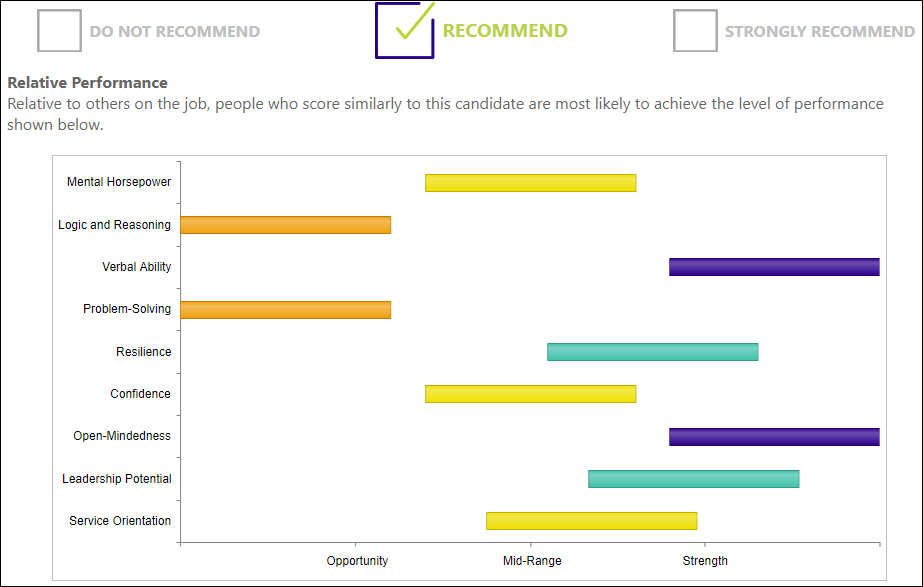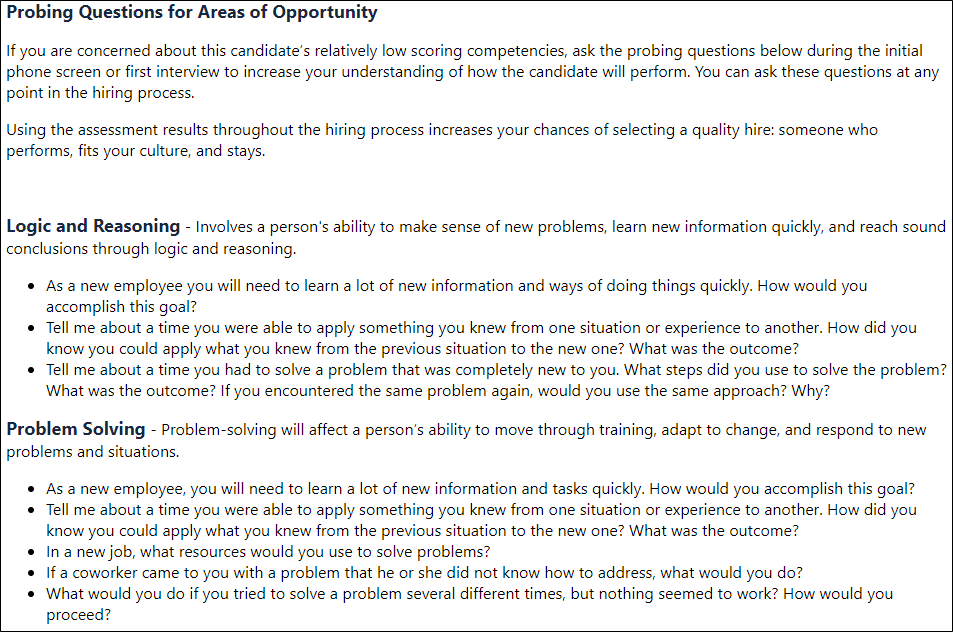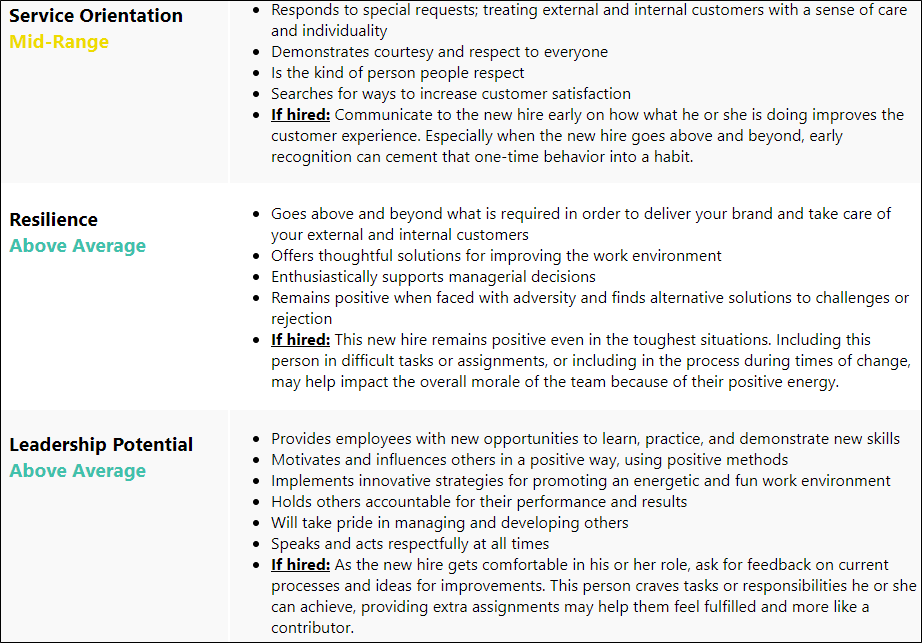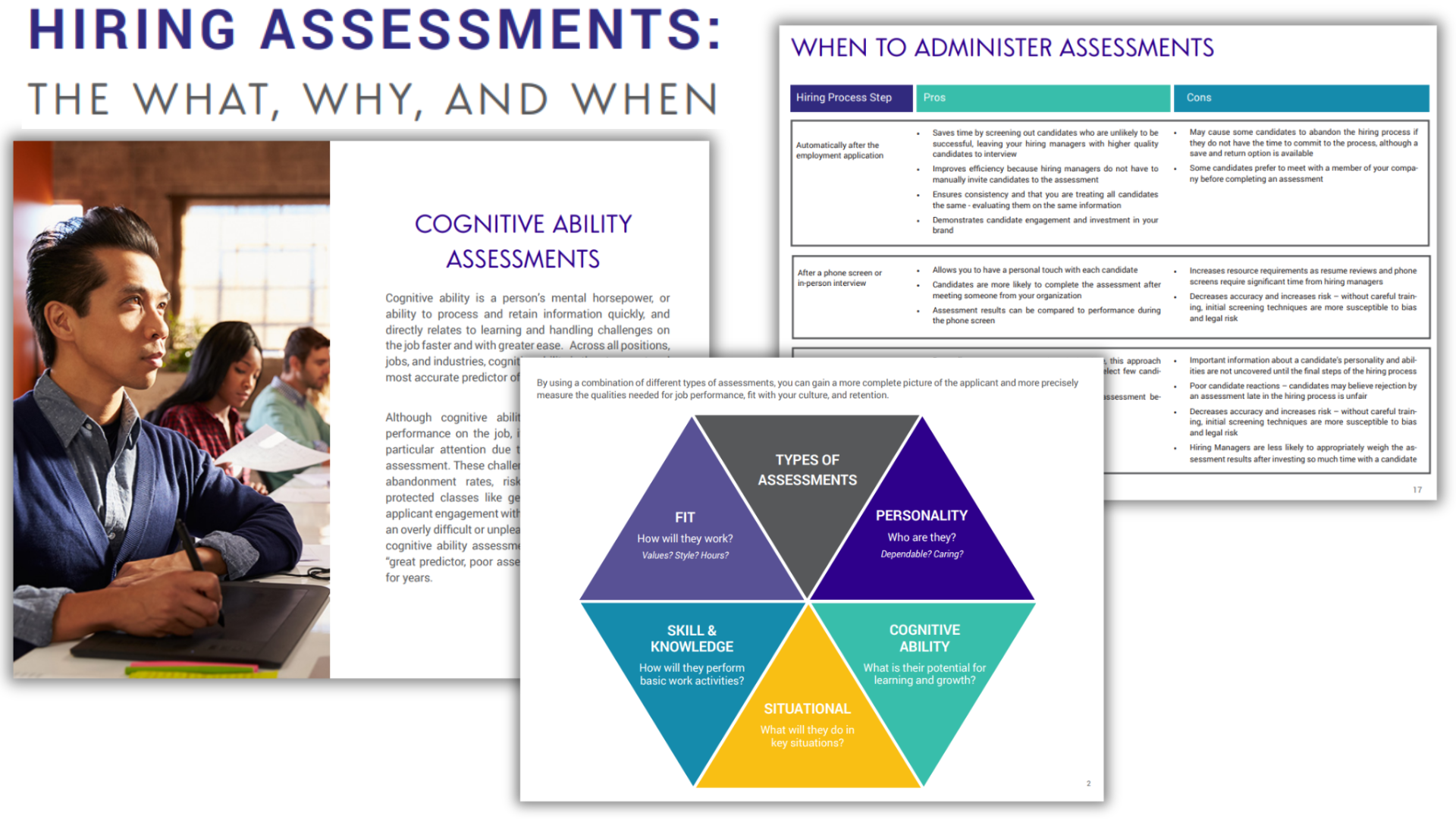At Corvirtus, our ability to communicate in ways that inspire action drives everything we do in strengthening a company’s culture by hiring, developing, and retaining exceptional people. Hiring assessments only influence business results if their findings and recommendations are relevant, understood, and used as part of the hiring decision. With this in mind, here are three objectives of our assessment results. If you’ve just started using our solutions this may give you useful points for comparing your options and building your hiring process.
Objectives of Corvirtus Assessment Results
1. Provide first-glance understanding and the right information at the right time.
Hiring managers review tens to hundreds of applicants in a short amount of time to not only reduce time-to-hire, but accurately determine who to move forward in the process. With our assessment results, users can quickly see one of three overall results:
- STRONGLY RECOMMEND [or Strong Match] (above average in all areas assessed),
- RECOMMEND [or Moderate Match] (likely to meet job expectations), or
- DO NOT RECOMMEND [or Weak Match] (unlikely to meet job expectations).
To gain more detailed information, users can quickly review the competency-based bar chart highlighting the candidate’s strengths and opportunity areas.
2. Learn how candidate performance on the assessment relates to key behaviors and outcomes on the job, and provide information and tools to use throughout the hiring process.
By using a data-driven process to develop and continually improve our assessments, we develop a detailed understanding of how assessments predict performance. This gives us job specific information about how personality traits, values, abilities, and other qualities measured in the assessments predict specific areas of job performance. We take this technical information and transform it into clear descriptions of how a candidate will likely perform on the job.
By using more than one method to verify and understand a candidate’s strengths and opportunities, you are more likely to make an accurate hiring decision. What’s more, each assessment result provides probing questions for the candidate’s greatest area of opportunity, which can be tailored to your specific culture and positions. 
3. Give an action-focused overview of strengths and opportunities to support the candidate's success if hired.
As you begin to more deeply evaluate candidates, you may need more specific information about a candidate’s potential performance and how to best support his or her success on the job. At this point the result gives more specific detail about a how a candidate will meet job demands and fit with your culture. The Performance Profile guides you to differentiate what areas of performance will be readily understood and which will be the most challenging to master, if the candidate is hired. It also provides you with more in-depth information about the competencies measured across the assessment – and development-driven insights on how the candidate will meet job demands and fit your culture. This information is based on norms linking tests scores to performance for thousands of candidates and employees in related positions. 
Putting It All Together
Our objective is to deliver assessment results that are understood at first glance while communicating research-driven findings in a job-relevant and clear manner. By doing this, we ensure our results are a trusted tool used throughout the hiring process. However, the result is only one piece of the puzzle. To learn more about how to select assessments that will predict performance for your unique positions and job demands read our eBook, The What, Why, and When of Assessments.

Resources
[1] Plotting Relationships and Conditional Distributions. Introduction to Social Statistics: The Logic of Statistical Reasoning. (2009).




